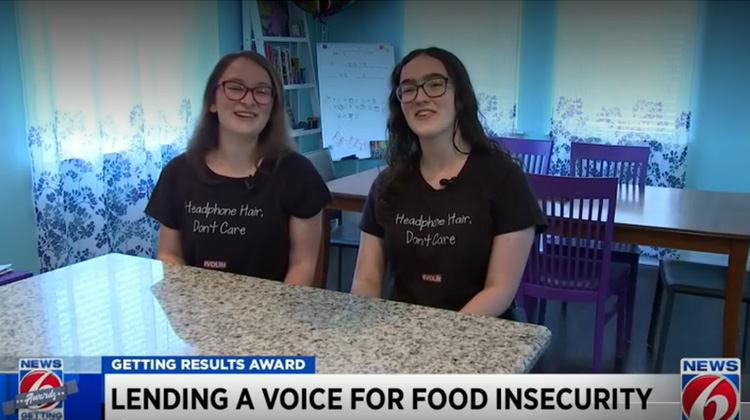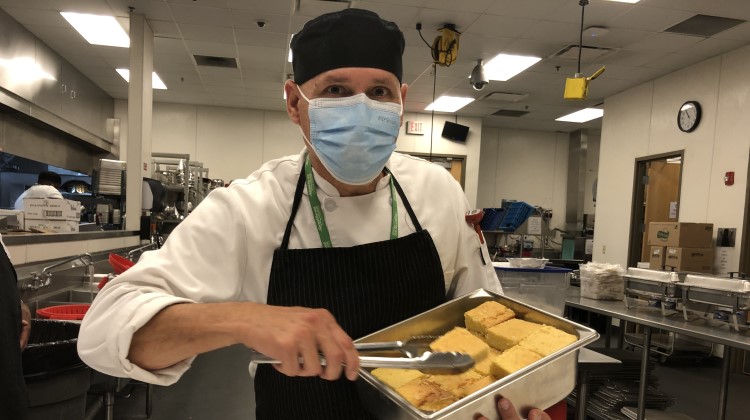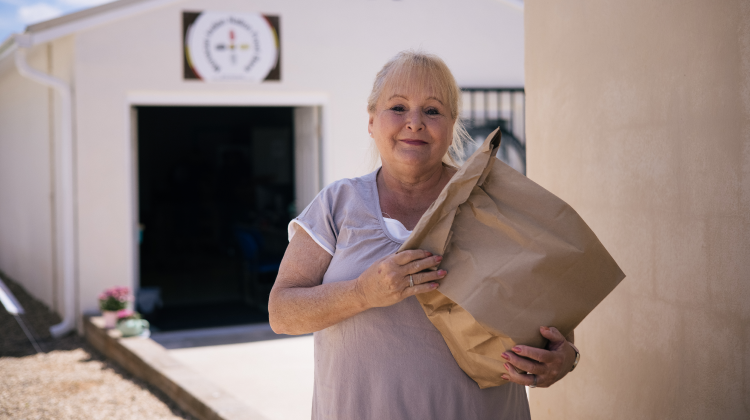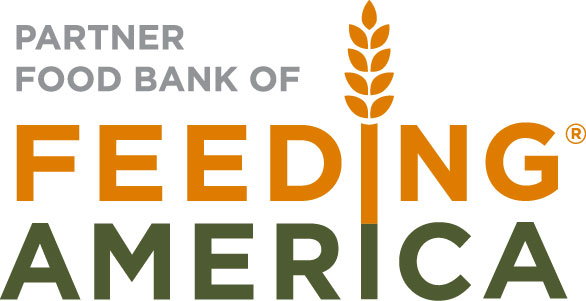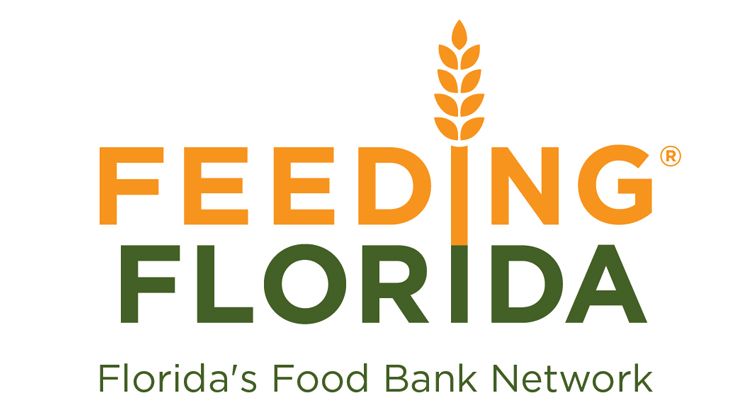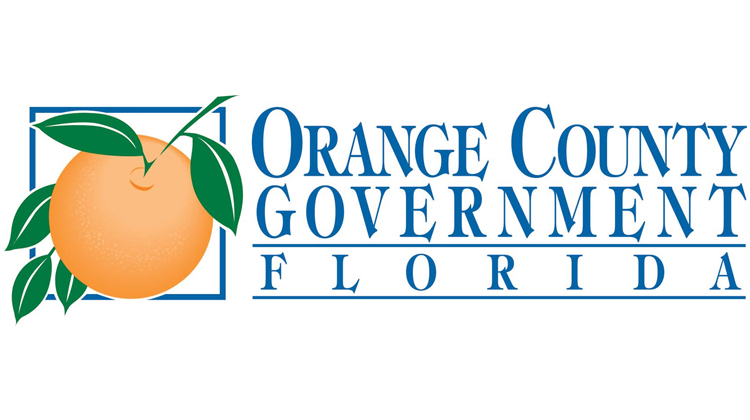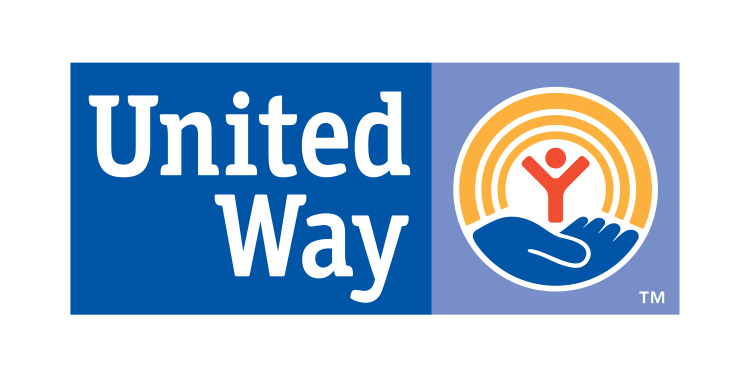After two difficult years, we’re all ready to believe that post-pandemic life is getting “back to normal.” But when it comes to hunger in Central Florida, that’s far from true. I’ve seen it firsthand over the last nine months as CEO of Second Harvest Food Bank of Central Florida: Food insecurity – and the challenges of solving it – are getting worse, not better.
The national director of Feeding America put it best earlier this summer when describing scenes of low supplies and sparse freezers during visits at member food banks: “You’re in the middle of a battle, and people are leaving the field.”
You’re in the middle of a battle, and people are leaving the field.”
During the pandemic, an outpouring of generosity allowed food banks like Second Harvest to expand distribution to serve unmet needs in the community. But even with the pandemic behind us, that need hasn’t gone away – and disasters like Hurricane Ian have dealt another punishing blow to many families who still weren’t quite back on their feet yet.
As costs rise and resources run dry, food banks are left struggling to cover the gap. Second Harvest’s network of more than 500 feeding partners across six counties is distributing 250,000 meals every day, a staggering increase of about 100,000 meals a day from early 2020. To put it another way: Not only is the number of local residents living with food insecurity still elevated, but it’s elevated by about 60 percent.
In grocery stores, on lease renewals and at gas pumps, families are facing higher expenses for the same necessities of food, shelter and transportation. Those approaching Second Harvest for help don’t always fit the “traditional” image of hunger. Many view themselves as middle class. Many are seeking help for the first time and never imagined they’d be in a position where they need food assistance. They’re working – in many cases, multiple jobs – but still be unable to make ends meet.
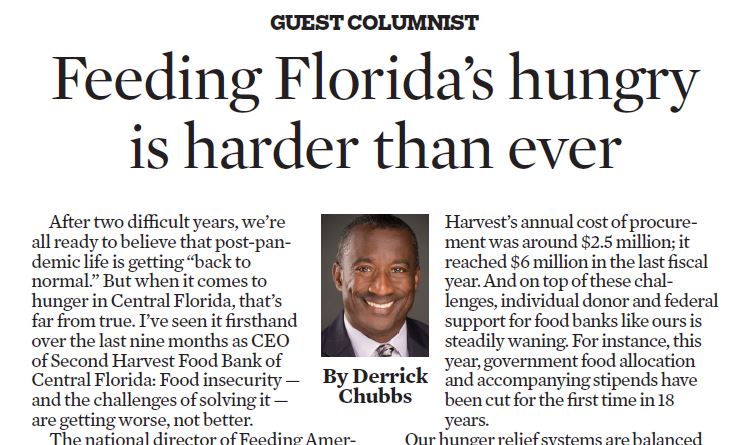
But increased need is only one half of the “inflation problem.” Food banks rely on purchasing food to supplement items donated by local and community partners, and these items are now more expensive than ever. Before the pandemic, Second Harvest’s annual cost of procurement was around $2.5 million; it reached $6 million in the last fiscal year. And on top of these challenges, individual donor and federal support for food banks like ours is steadily waning. For instance, this year, government food allocation and accompanying stipends have been cut for the first time in 18 years.
Our hunger relief systems are balanced on a razor’s edge. And when the next disaster strikes – whether that’s another storm, pandemic, or economic downturn, or some other unforeseen tragedy – Florida’s most vulnerable families will be the first to feel the impact.
What then can we do to help?
At Second Harvest, we believe that change starts with taking action – with generous donors who make monthly pledges to support struggling families; with our dedicated volunteers, who help prepare meals for students, families, and homebound seniors; and with initiatives that “shorten the line” of hunger by investing in job training, financial stability and nutrition education. Most of all, change starts with honest, realistic conversations about the true face of hunger in our community.
Recently, I was given the opportunity to cast the spotlight on food insecurity in Florida at a September 23 Fed Listens panel, alongside business and community leaders and the Board of Governors of the Federal Reserve. We discussed the challenges of our new economic landscape – and the importance of comprehensive, community-wide programs to help families get back on their feet.
The “battle” against hunger isn’t over, and as Florida’s families rebuild their homes and lives in the wake of Ian, the need for support is more pressing than ever. You can support with your dollars and with your voice. To learn more about Second Harvest’s impact and services, or to find out how you can get involved, visit www.feedhopenow.org.
This guest column originally appeared in The Orlando Sentinel on Oct 9, 2022.


